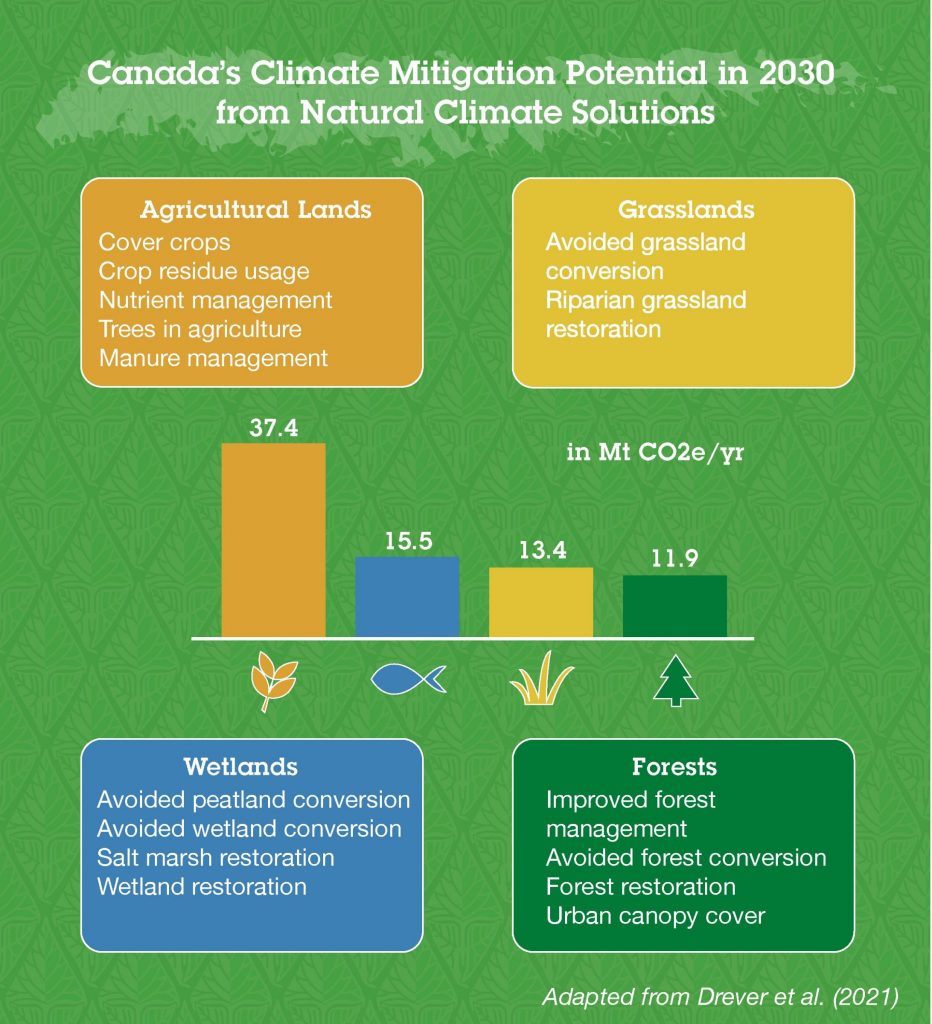Ontario Nature Blog
Receive email alerts about breaking conservation
and environmental news.
© Lora Denis
© Kati Bruch
This blog is the first in our a series about nature-based solutions to climate change. Canada is warming twice as fast as the global rate, causing profound changes to our climate, health and biodiversity. Climate change is imperiling water, food, biodiversity and the natural systems that we rely on.
Part II: The Case for Nature-based Solutions to Climate Change
It’s September and in southern Ontario the goldenrods are in full bloom. Hues of gold jump out from the predominantly green landscape signaling that change is coming. Cool autumn days are upon us. For some, this brings a feeling of relief considering this past summer was the hottest on record. July was the warmest month on Earth since 1880. Luckily, new research shows that nature has a role to play in solving the climate crisis.
A group of Canadian researchers has explored solutions to climate change that focus on protecting, managing and restoring ecosystems to encourage carbon sequestration and prevent emissions release. The new study laid out 24 natural climate solutions (also known as nature-based climate solutions) and assessed the carbon mitigation potential achievable at three price points ($10, $50 and $100). If implemented immediately, it is estimated that these natural climate solutions can mitigate 78 million tonnes of CO2e emissions a year by 2030; over 10% of our national annual emissions. That’s like taking 15 million Canadian vehicles off the road!

Ontario Nature’s Protected Places team interviewed Dr. C. Ronnie Drever, Senior Conservation Scientist for Nature United and lead author of the study to learn about natural climate solutions, potential pathways for Ontario and next steps for implementation.
Dr. Drever: Nature-based solutions can mean many different things to people about the role of nature in dealing with climate change. At Nature United, we wanted to be clear that natural climate solutions focus squarely on mitigation, and that they need to include biodiversity and social safeguards. We didn’t want to propose ideas that may be good for the climate but have negative consequences for biodiversity or society. We wanted to include an economic aspect to the research too, as there is limited information on this aspect.
Dr. Drever: The agricultural and grasslands findings were revelations [researchers found that avoiding grassland conversion and improving management of agricultural lands via practices such as cover crops and tree intercropping hold the highest climate mitigation potential]. Grass covered biomes – which includes native prairie as well as working pasture lands – hold a lot of carbon and do a great job of building soil organic carbon. Much of this carbon gets released into the atmosphere when these lands are tilled. We know that the agricultural soil bank is diminishing through time. In Canada, we need to do a better job of protecting our working grasslands.

Dr. Drever: An Ontario-specific study would be great. Further research on peatlands is also needed. Peatlands in the Hudson Bay lowlands have some of the deepest carbon stores on earth. Currently, we don’t have good peatland maps so characterizing what peatlands are most under threat is difficult.
Dr. Drever: Policy, industry involvement and carbon markets are key. An all-hands-on-deck approach is required. Government policy will be important to motivate those that aren’t ready to get on board with natural climate solutions. Encouraging net-zero commitments and accountability of industries will also be important. A lot of companies want to get in on offset schemes as part for their corporate social responsibility commitments. While there are drawbacks to carbon offsets, there is a lot of interest that we can’t ignore, and we need to ensure implementation relies on high quality offsets and optimizes available dollars so we can get the best results on the ground.
Dr. Drever: The most important message I would communicate is that natural climate solutions are an excellent opportunity that is available now (i.e., we don’t have to wait for technological advancements) as a way to tackle climate change while delivering a suite of other benefits for people and nature.

Gananoque Lake Nature Reserve © Smera Sukumar